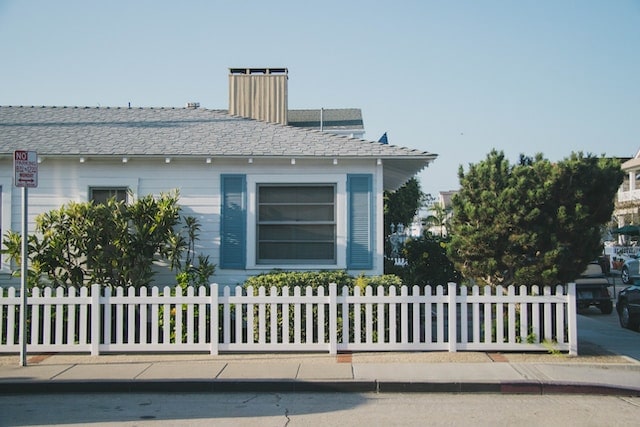
Welcome to dgfencingct.com, your go-to destination for all your fencing installation and repair needs in Fairfield, Westport, Norwalk, Milford, Stratford, New Haven, and Orange, Connecticut, USA. Fencing is not just about security and privacy; it is also about adding a touch of elegance to your property. Whether you are a novice in the world of fencing or a passionate enthusiast looking to enhance your current setup, our comprehensive guide is here to assist you. We offer valuable knowledge and tips to help you make informed decisions every step of the way. From exploring various fencing types to selecting the perfect materials and executing a flawless installation, we cover all aspects of fencing, enabling you to create a breathtaking and functional outdoor space.
1. Introduction
In this introductory section, we will highlight the importance of fencing and how it can benefit both residential and commercial properties. Fences serve various purposes, including security, privacy, and aesthetic appeal. By understanding the significance of fencing, you can make better decisions for your specific needs.
2. The Importance of Fencing
Fencing plays a crucial role in providing security and establishing boundaries for your property. It helps prevent unauthorized access and keeps your loved ones, pets, and belongings safe. Additionally, fences offer privacy, creating a personal and intimate space within your property. They also contribute to the overall aesthetics of your outdoor area, enhancing curb appeal and increasing property value.
3. Types of Fencing
There are several types of fencing available, each catering to different needs and preferences. In this section, we will explore three common types of fencing:
3.1. Decorative Fencing
Decorative fencing focuses on enhancing the visual appeal of your property. It can be made from various materials and features intricate designs, adding a touch of elegance and charm to your outdoor space.
3.2. Privacy Fencing
Privacy fencing is designed to create secluded areas within your property. It blocks the view from outside and provides a sense of solitude. This type of fencing is ideal for backyards, swimming pools, or areas where you want to enjoy privacy.
3.3. Security Fencing
Security fencing prioritizes protection and deterrence. It is commonly used for commercial properties, industrial sites, and high-security areas. Security fences are built with durable materials and additional security features to ensure maximum protection.
to ensure its durability, aesthetics, and maintenance requirements align with your preferences. Here are four commonly used materials for fencing:
4.1. Wood
Wood is a classic and versatile choice for fencing. It offers a natural and timeless appeal, blending well with various architectural styles. Wooden fences can be made from different types of wood, such as cedar, pine, or redwood, each with its own characteristics in terms of durability and resistance to rot and insects. Wood fences can be customized with different designs and finishes to suit your personal taste.
4.2. Vinyl
Vinyl fencing has gained popularity due to its low maintenance requirements and long-lasting durability. It is resistant to rot, warping, and fading, making it an excellent choice for areas with high moisture or extreme weather conditions. Vinyl fences are available in various styles and colors, providing versatility and flexibility in design options.
4.3. Metal
Metal fencing, such as wrought iron or aluminum, offers strength and security. It is a durable option that can withstand harsh weather conditions and provides a robust barrier. Metal fences can be ornamental, featuring intricate designs, or more straightforward for a modern and minimalist look. Regular maintenance, including repainting and rust prevention, is necessary to ensure the longevity of metal fences.
4.4. Composite
Composite fencing combines the benefits of wood and plastic materials. It offers the natural appearance of wood while requiring minimal maintenance. Composite fences are resistant to rot, insects, and warping, making them a durable and long-lasting option. They are available in various colors and styles, providing a range of design possibilities.
5. Choosing the Right Fence for Your Needs
When selecting a fence for your property, there are several factors to consider. The following subsections will guide you through the decision-making process based on your specific needs.
5.1. Considerations for Residential Fencing
For residential properties, factors such as privacy, aesthetics, and budget play crucial roles. Assessing the level of privacy required, the overall design aesthetic of your home, and your financial limitations will help determine the most suitable fence type and material.
5.2. Factors to Consider for Commercial Fencing
Commercial properties often have different requirements for fencing, focusing more on security and functionality. Factors such as access control, perimeter protection, and visibility need to be taken into account when choosing a commercial fence. Consulting with security professionals and understanding local regulations can assist in making the best decision for your commercial property.
6. Installing a Fence
The installation process of a fence can vary depending on the type of fence and your level of expertise. In this section, we will provide an overview of the general installation steps to give you an idea of what to expect.
6.1. DIY vs. Hiring a Professional
Deciding whether to install the fence yourself or hire a professional is an important consideration. DIY installation can save you money but requires time, effort, and some level of expertise. Hiring a professional ensures a proper and efficient installation, especially for complex projects or if you lack experience.
6.2. Preparing the Ground
Before installing the fence, it is necessary to prepare the ground properly. This includes measuring and marking the fence line, clearing any obstructions, and ensuring the ground is level.
6.3. Installing the Fence Panels
The installation of the fence panels varies depending on the material and style of the fence. It typically involves attaching the panels to the posts securely and aligning them correctly to achieve a uniform appearance.
6.4. Adding Gates and Accessories
If your fence requires access points, installing gates is the next step. Gates should be chosen to match the style and functionality of the fence. Additionally, consider incorporating
accessories such as decorative post caps, latches, and hinges to enhance the overall functionality and aesthetics of your fence.
7. Maintaining Your Fence
Proper maintenance is essential to ensure the longevity and appearance of your fence. In this section, we will discuss some key aspects of fence maintenance.
7.1. Regular Cleaning
Regular cleaning helps remove dirt, debris, and stains that can accumulate on your fence over time. Depending on the material, a simple wash with mild soap and water or a specialized cleaner can keep your fence looking fresh and vibrant.
7.2. Painting and Staining
Wooden and metal fences may require periodic painting or staining to protect them from the elements and maintain their appearance. Choosing high-quality paint or stain and following the manufacturer’s instructions will ensure optimal results.
7.3. Repairing Damages
Even with proper maintenance, fences can sustain damages due to weather conditions or accidents. Promptly repairing broken or damaged components, such as boards, panels, or posts, will help maintain the integrity and functionality of your fence.
8. Enhancing Your Fence
Beyond its primary functions, a fence can be enhanced to create a more inviting and aesthetically pleasing outdoor space. Consider the following ideas to enhance your fence:
8.1. Landscaping and Plantings
Integrating landscaping elements, such as flower beds, shrubs, or climbing plants, can soften the appearance of your fence and create a harmonious connection with the surrounding environment.
8.2. Lighting
Strategically placed outdoor lighting can enhance the beauty of your fence while providing safety and security during nighttime. Consider options like solar-powered lights, string lights, or spotlights to illuminate your fence and create a welcoming ambiance.
8.3. Decorative Accents
Incorporating decorative accents, such as trellises, decorative panels, or art pieces, can add a personal touch and make your fence a focal point of your outdoor space.
9. Conclusion
In conclusion, when it comes to fencing installations and repair services in Fairfield, Westport, Norwalk, Milford, Stratford, New Haven, and Orange, Connecticut, USA, look no further than dgfencingct.com. We understand that fencing serves a multifunctional purpose by providing security, privacy, and aesthetic appeal to your property. With our expertise in different types of fencing, selection of the right materials, and adherence to proper installation and maintenance practices, we can help you create a durable, attractive, and functional fence that enhances your outdoor space.
10. FAQs
1. How long does a fence typically last?
The lifespan of a fence depends on various factors, including the material used, maintenance efforts, and weather conditions. Generally, well-maintained fences can last anywhere from 15 to 50 years.
2. Can I install a fence on my own?
DIY installation is possible for some fence types, especially if you have the necessary skills and tools. However, complex installations or lack of experience may require hiring a professional for optimal results.
3. How often should I repaint or stain my fence?
The frequency of repainting or staining your fence depends on the material and environmental conditions. As a general guideline, wooden fences may require repainting or staining every 3 to 5 years, while vinyl or metal fences typically don’t need regular painting or staining.
4. What are the common regulations or permits required for installing a fence?
Regulations and permit requirements for fences vary depending on your location. It is important to check with your local authorities or homeowner’s association to understand any guidelines or permits necessary before installing a fence.
5. Can I mix different materials for my fence?
Yes, mixing materials can create unique and visually appealing fence designs. However, it’s important to ensure compatibility between materials and consider their maintenance requirements for long-term durability.



